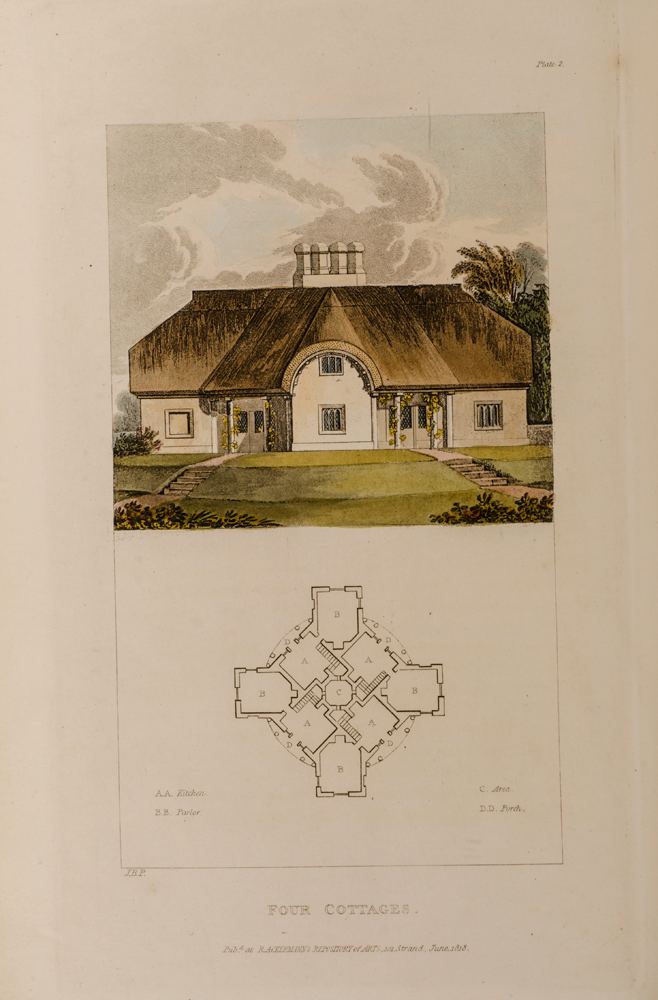Nationality British Role Architect Name John Papworth | Spouse(s) Jane Wapshott Occupation Architect Children Wyatt Papworth | |
 | ||
People also search for Thomas Leverton Donaldson Books Rural residences: consistin, Hints on Ornamental Gardenin, Rural Residences: Consistin | ||
John Buonarotti Papworth (London 24 January 1775 – 16 June 1847 Little Paxton, Huntingdonshire) was a prolific architect, artist and a founder member of the Royal Institute of British Architects.
Contents

He adopted the middle name "Buonarotti" in around 1815.
Life
Papworth was born in Marylebone, London, in 1775 to John Papworth and his wife Charlotte (née Searle). He was one of twelve children and the second of six sons. His father described himself as an "architect, plasterer and builder". His background was in decorative plasterwork, and he dominated the trade in London, employing more than 500 men.
At the recommendation of Sir William Chambers he spent two years as a pupil of the architect John Plaw and was then apprenticed to the builder Thomas Wapshott, whose daughter Jane he then married.
John Summerson described Papworth as "one of the most versatile architects and decorative artists of the period". He contributed designs to Ackermann's Repository of the Arts for almost 20 years, and published some of his designs for houses as Designs for Rural Residences in 1818. In London he designed shop fronts (one, for a tea merchant in Ludgate Hill, was in a "Chinese" style) and warehouses, and built or remodelled many villas for middle-class clients in the countryside. At Cheltenham he laid out the Montpellier Estate, and extended the Montpellier Pump Room (1825–26), with a domed rotunda inspired by the Pantheon.
In 1827 William Bullock commissioned Papworth to plan the layout and design various classes of building for a new city to be called "Hygeia" in the United States, on land he had bought stretching about two-and-a-half miles along the Ohio River, opposite Cincinnati. Bullock published the plans, hoping to attract purchasers for the plots, but the scheme came to nothing.
He exhibited at the Royal Academy between 1816 and 1841. His address is given as Bath Place, New Road, London, until 1816, and 10 Caroline Street, Bedford Square, from 1823. In the latter year he is described as "Architect to the King of Wirtemberg", and exhibited a design for a "Palace at Canstadt for the King of Wirtemberg".
In 1838 he became director of the newly established Government School of Design.
His archive of drawings is in the Royal Institute of British Architects Drawings and Archives Collections.
He had two sons, John Woody Papworth, and Wyatt Papworth. His brother George Papworth acted as his clerk of works until 1804 and then practised as an architect in Ireland.
